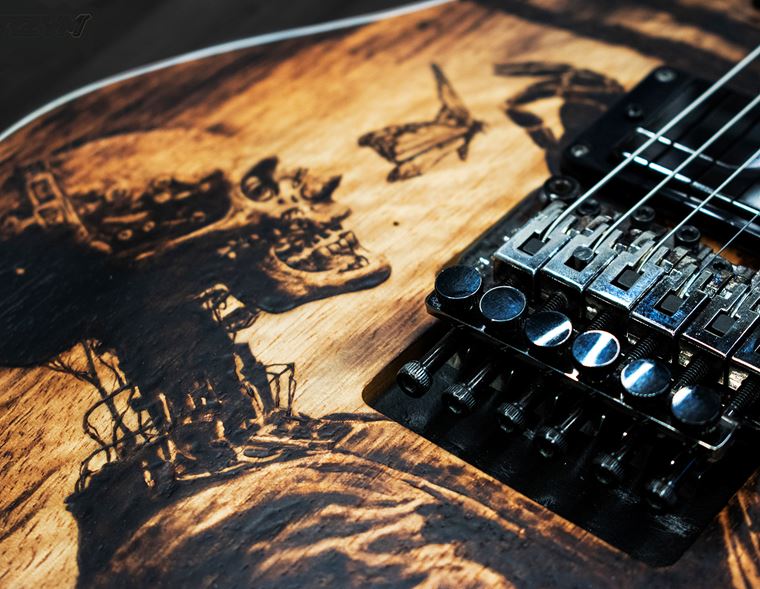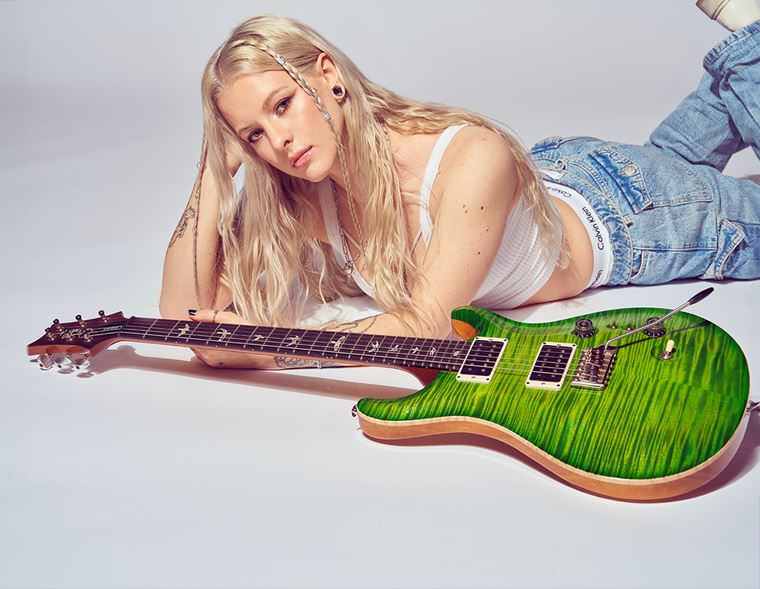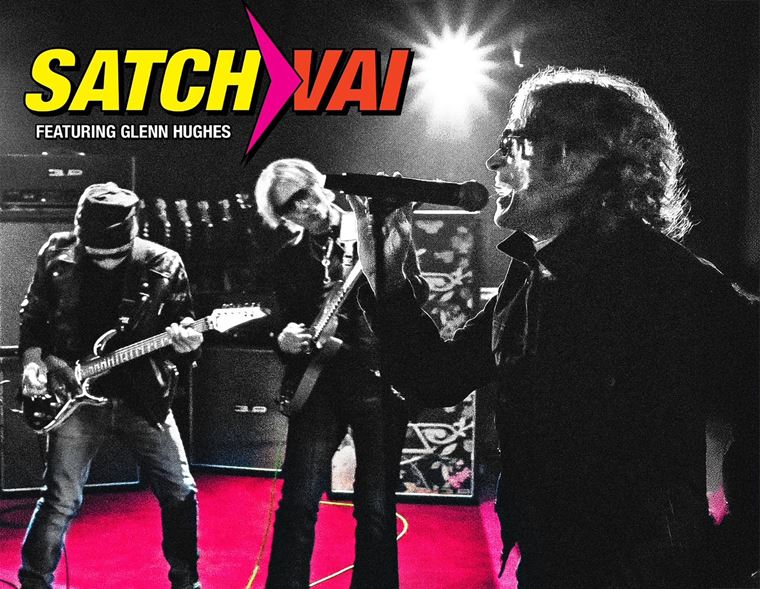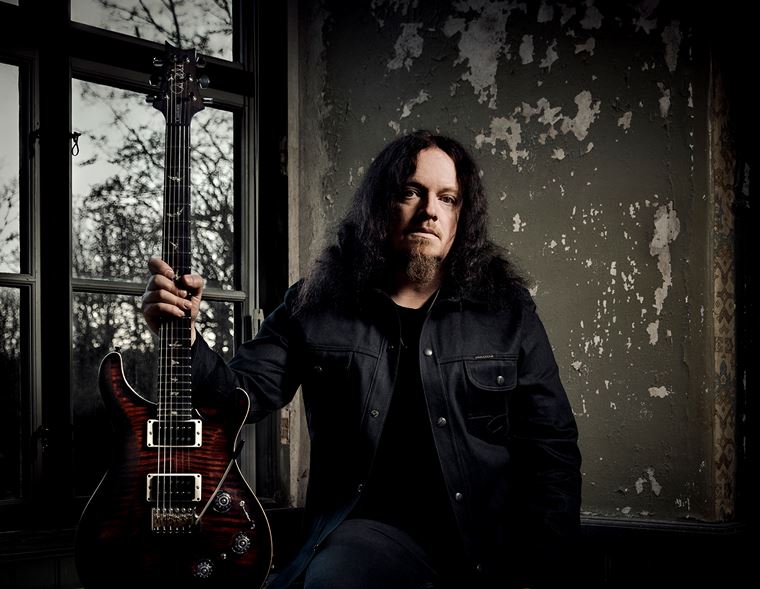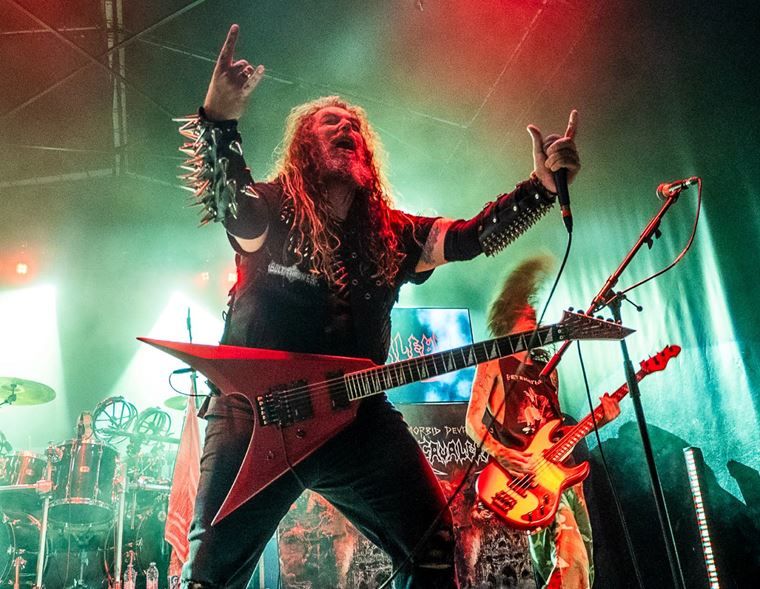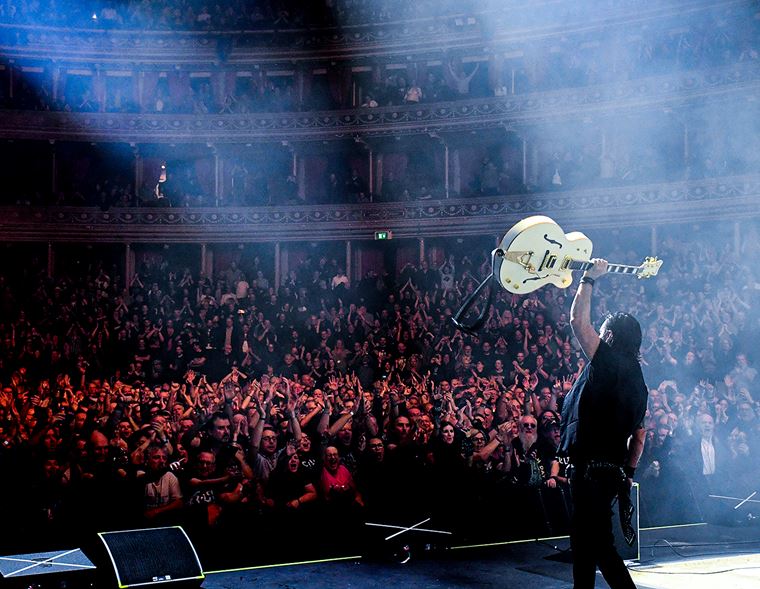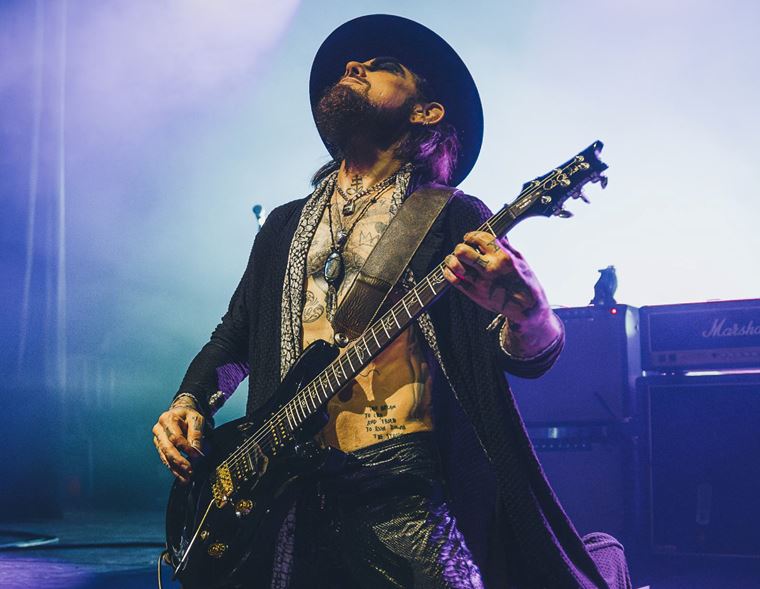The guitarguitar Interview: Jamie Lenman
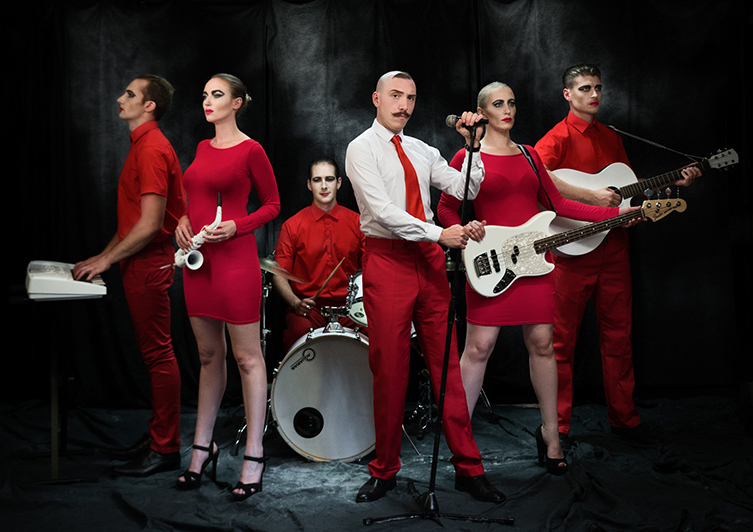
Guitarguitar: Jamie, your newest record, Shuffle, is a take on today’s playlist culture. Did the concept suggest itself naturally?
JL: Not really to be perfectly honest. My producer suggested we needed an overarching theme to somehow connect all the different styles of music and I thought the concept of shuffling through your ipod would work, but then I realised that the iPod itself has been extinct for about ten years, so Spotify and playlists and the like still works (I hope!)
GG: The songs are mainly covers, or re-interpretations, if you prefer. How did you decide what to include on the record?
JL: They were all songs that had been gradually sticking to me like musical limpets throughout my life – so I knew I wanted to sing ‘vampire’ since I heard it when I was about ten, and I was mucking about with versions of the wolverine theme since I was twelve (there’s taped evidence!) so they were all more or less inevitable. The only two that were ‘choices’ were the spoken word tracks, because it was only when I realised I was going to make the record that I decided to take the concept to its extreme, and even then moby dick is my favourite book and ‘always crashing in the same car’ is my favourite short so it was fairly easy.
GG: You’ve always had a non-linear, wide-ranging approach to the styles of music you incorporate into your records. Do you think diversity is actually how we are currently digesting our music? Does streaming/playlist culture actually open our collective ears to hearing more disparate juxtapositions of music?
JL: I hear a lot about how kids today don’t differentiate between different genres of music and it’s all one to them and the tribes are disappearing but I’m not sure I believe it. I was always bewildered when people would say that the reuben records were too diverse, like anyone listened to just one type of music. That’s why I made the muscle memory record, and people still called it bizarre. Like, is it so surprising that someone would listen to folk music and thrash music? Maybe not, but it was weird to put them on the same record. So maybe that’s the difference.
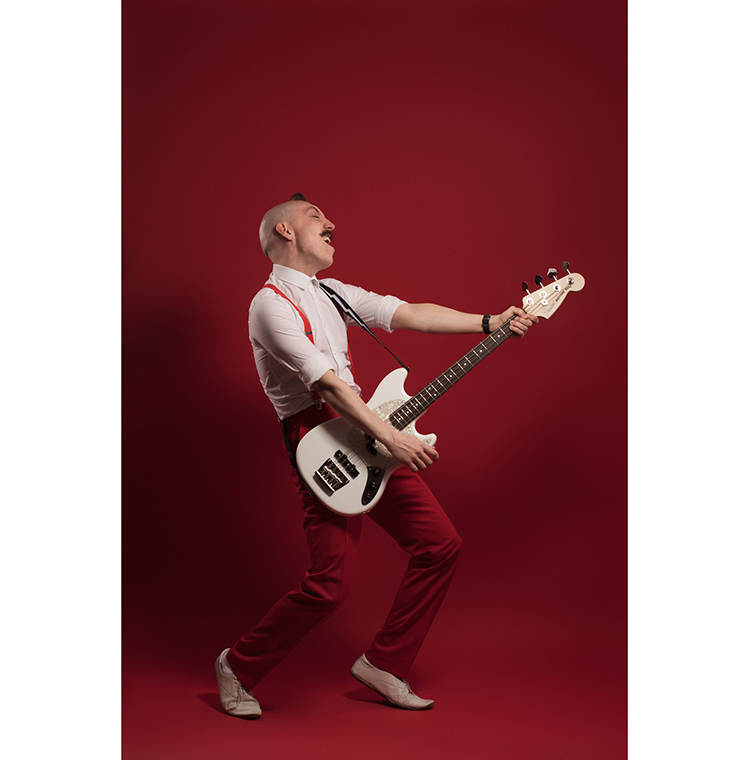
GG: I really admire your enduring loyalty to your old Yamaha RGX guitars and your Laney Tube Fusion amp! Are these the same instruments you use in the studio?
JL: I take ‘em to all the sessions and they’re always in the mix somewhere (literally) but producers have racks of guitars and amps and we always try a few to make sure the sound isn’t the same on every track. So usually on every track there’s at least one run through of me with my gear and ‘my sound’ but then we double it with something else, a mystery guest, just to mix it up.
GG: Are you normally in Standard tuning? What is your preference for plectrums and strings?
JL: I used to tune to drop D but then I took it all down one semitone so I could sing some higher notes (I know that’s not how it works but you know what I mean) so C# G# C# F# A# D#. Sometimes I’ll go up to relative E (D#) if I want some jangly open chords. I use Dunlop .88mm picks, for a bit of grip.
GG: Your distorted sound on Devolver and Shuffle is excellent! Is that the Yamaha/Laney combination?
JL: Like I said, it’s that combo with other guitars and amps in the mix. I did a bit on my producer’s hollow-body gretsch, that was great.
GG: Given that the process may well be different from song to song, when writing, do you generally tend to use acoustic or electric guitar?
JL: It depends if it’s an aggressive song or a mellow song. It’s tough to write a rocking riff on an acoustic guitar so I usually plug into the POD for a bit of crunch. Then if I’m feeling melancholy I’ll grab the acoustic and let dem strings jangle out…
GG: Live, you are currently playing with just a drummer. On record, you use many more musical elements. What are the benefits and drawbacks of having such a lean line-up?
JL: The benefits are many, so many – you only have to arrange rehearsal with one guy, chiefly, you only have to teach one guy the songs. Live is very free, I can change it up without having to tell a bass player or a second guitarist so I can re-work the riffs in the moment, very exciting. It also means I have more physical space for myself, I can move around, and it’s easier for the crowd to see me. We get a stronger connection without the other people in the way. The only drawback is it’s tough to play certain songs where the bass and the guitar line diverge, like if the bass is holding down the riff and the guitar does something jangly up top. But even then you can usually find a workaround, that’s the beauty of the guitar, you can play the same thing in umpteen different positions on the fretboard, so I find that part incredibly fun, it encourages creativity. It’s also cool when the live version is a little different to the record, or else why bother coming to the show?
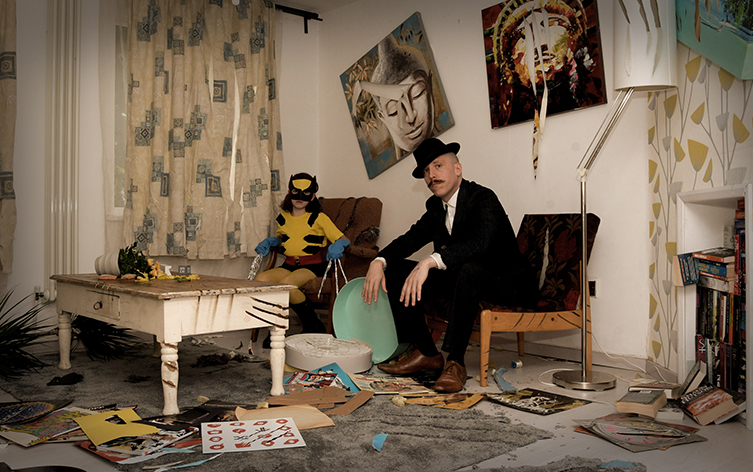
GG: I like your sartorial style! Has ‘smartening up’ changed your attitude in other ways? Does it come into how you approach music?
JL: When I first started wearing three-piece suits I got very formal and it did change me – I was going through a tough time and I didn’t really know who I was. Over the years I’ve relaxed a bit and so have my clothes…definitely during Muscle Memory it was all of a piece, the record (at least the mellow half) had a very strong pre-war influence and I’d fallen down a rabbit hole of Edwardiana, so to speak. Then again, I used to enjoy going out with four guys in waistcoats and pocket watches and ripping into the heavy half!
GG: What is the best footwear for leaping around on stage?
JL: I dunno – I wear these little white brogued plimsolls but I don’t really do that much leaping about. I’m thirty seven!
GG: Let’s talk about inspiration: do you make a point of writing music regularly, or do you wait for inspiration?
JL: I’ve never ever been one of those people who says ‘right – I’m going to write music NOW’ and then sits down to do it – I can’t really see how that works, and whenever I hear the results they sound forced. I find I have to wait for inspiration, however long that takes. Sometimes years!
GG: Do you find your other life as an illustrator feeds your music creatively? For you, is it as simple as creativity coming from the same place, and you simply pick up either a guitar or a pencil?
JL: I’m afraid there’s no real link, as un-romantic as that sounds. Only as far as thinking of ideas for record covers or t shirts etc, which is always fun.
GG: You’re not afraid of a good bout of heavy riffing: what, to your taste, makes for a great guitar riff?
JL: I like tuning the top strings to a chord and then lots of hammer-ons and pull-offs – see ‘My Own Summer’ by the Deftones for a great example of this. Lots of chonk. Bit of palm muting, love that.
GG: How easy is it to divide your time between music and art?
JL: If by ‘art’ you mean illustration, then it’s fairly easy. Music only happens in controlled periods of rehearsal, recording or performance, with maybe the odd bout of inspiration, so the rest of the time is where I do my illustration work. This week I’ve been on tour Monday-Tuesday-Wednesday so now I have Thursday and Friday to complete a couple illustration jobs and the weekend to relax before touring again on Monday. It’s not always that clear cut, or that busy! But this week it is.
GG: You are known as a very hands-on organiser of your career. In terms of putting together tours and releasing records, do you find that it tends to take care of itself, this far into your career? Any tips on organising a small tour for bands on their way up?
JL: It might take care of itself but not necessarily in the way you want it to, which is why I ended up being quite hands-on. It wasn’t my intention, I just always knew what I wanted and the easiest way to get it (also the hardest) is to do it yourself! I don’t know what I would advise for bands in this area – if your only concern is the music and you don’t really care where you tour or what you album cover looks like then you’re free in a way I will never be and you can leave it up to other people.
GG: Given that you’ve said you aren’t too interested in social media, how important is it actually for your career?
JL: It’s the chosen platform at the moment. When I was starting out it was all physical print and you had to send letters in the post to your fans. Then it went on to Myspace and facebook, now it’s moving to youtube and Instagram. I was reluctant to engage with social media at first but I keep it at arm’s length and it seems to be working out. I don’t have any personal accounts, it’s a horrible idea.
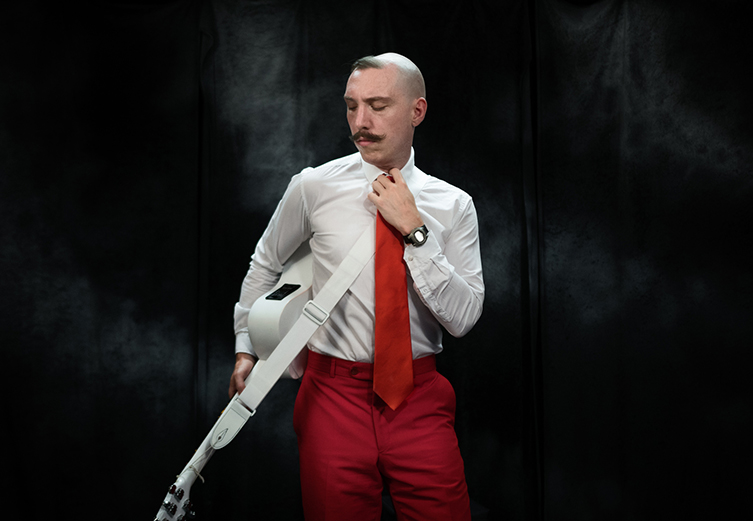
GG: Do you enjoy making videos or is it a necessary evil?
JL: Most of the time I really enjoy them, I think very visually and I usually have an idea for how each track might be represented in the medium. It only gets tough when you’re actually filming cos time just goes into overdrive and disappears on you. I’ve been working a lot recently with a very talented photographer called Scott Chalmers who has a great look and understands exactly what I want. He’s indispensable.
GG: What advice do you have for other multi-disciplinary creative people who want to make their living from music?
JL: It’s a double-edged sword – some people would say that having that flexibility means you can draw income from lots of different areas like I do, but I’ve always wondered if I had only music or only illustration, would I have been able to concentrate on either one and make a bigger go of either? I used to advise people that it’s good to have some kind of back-up plan like a trade or whatever in case your passion doesn’t work out for you, but then if you always have that foot out the door, what chance does your passion have of working out? I guess if you look at me and you like what you see, then do it how I did it. Spread your bets, pick two careers, live a comfy live jumping between them.
GG: Let’s clear up one weird detail from your Wikipedia page. It says, and I quote: “What may surprise you about Jamie is his height. He measures in at 7 feet 8 inches tall.” Since I don’tbelieve that for even a second, could you clarify once and for all: what height are you really?
JL: I don’t know, not that tall. Who knows how tall they are? When do you ever need that information? Wikipedia once said I’d died in a car accident. Thanks internet.
GG: Finally, what do you have in store for 2020?
JL: I want to play lots more festivals, I only did a few last year, and I want to make a small record, maybe an EP or something. There’s lots of plans for lots of crazy things that might happen which I can’t talk about yet, not because I want to be coy, but because they may not materialise and then people will forever be asking me about my range of baby clothes that never came out. Whatever it is, it’ll be cool.
Sounds good to us! Catch Jamie this month on tour, and find tour dates and more on the Jamie Lenman website. He's like to thank Jamie not only for his fun answers but also his speed! We'd also like to thank Matt Hughes for setting us up.
Thanks for reading!
We'll be seeing you
Ray McClelland



